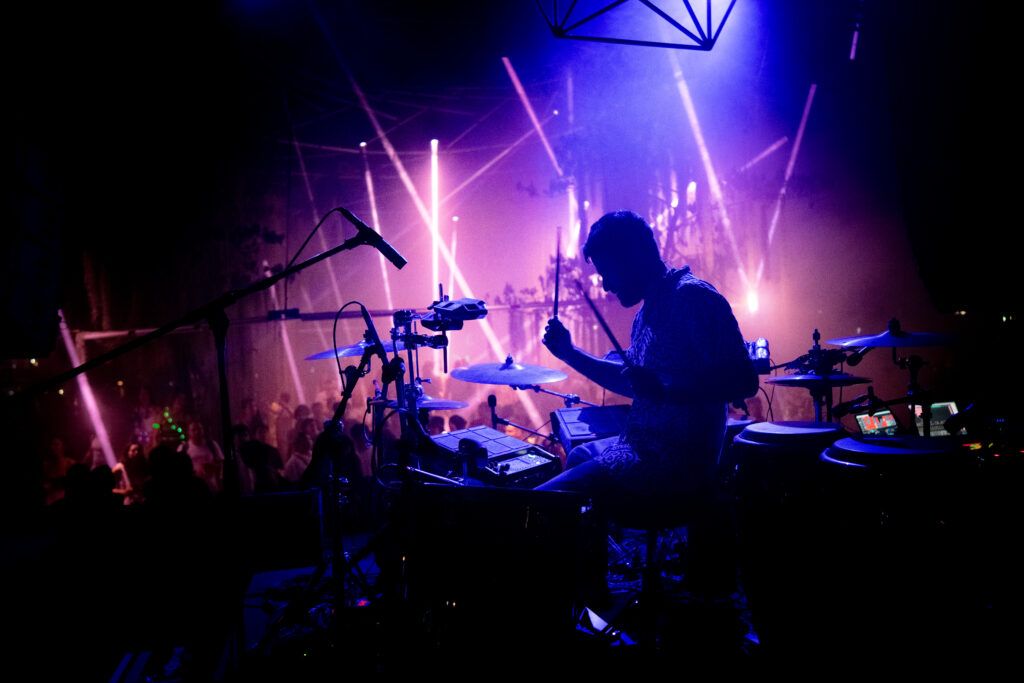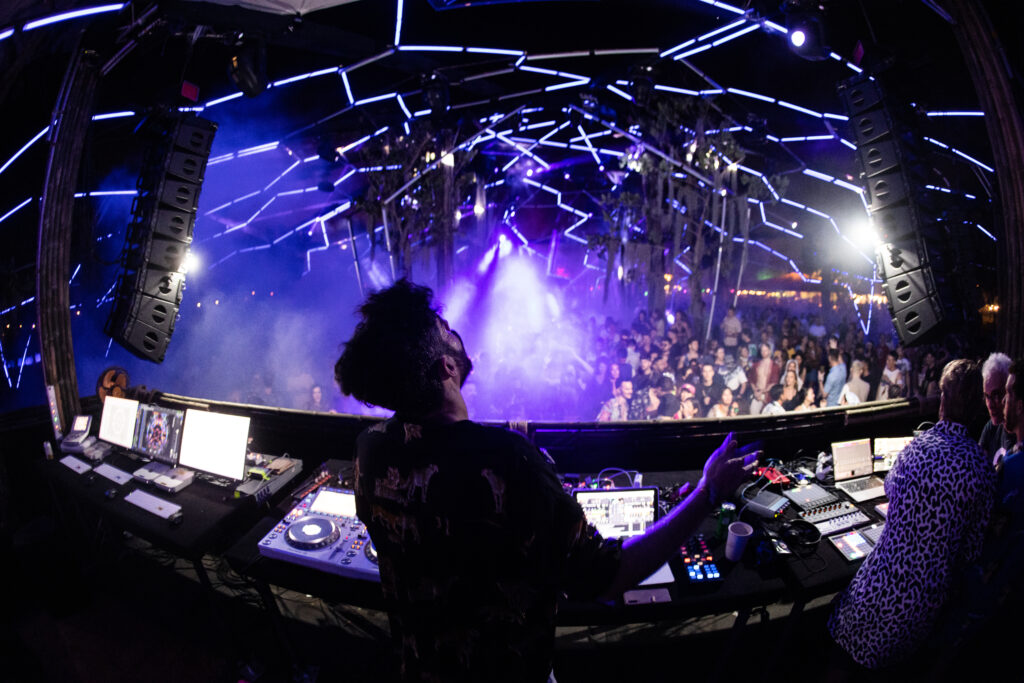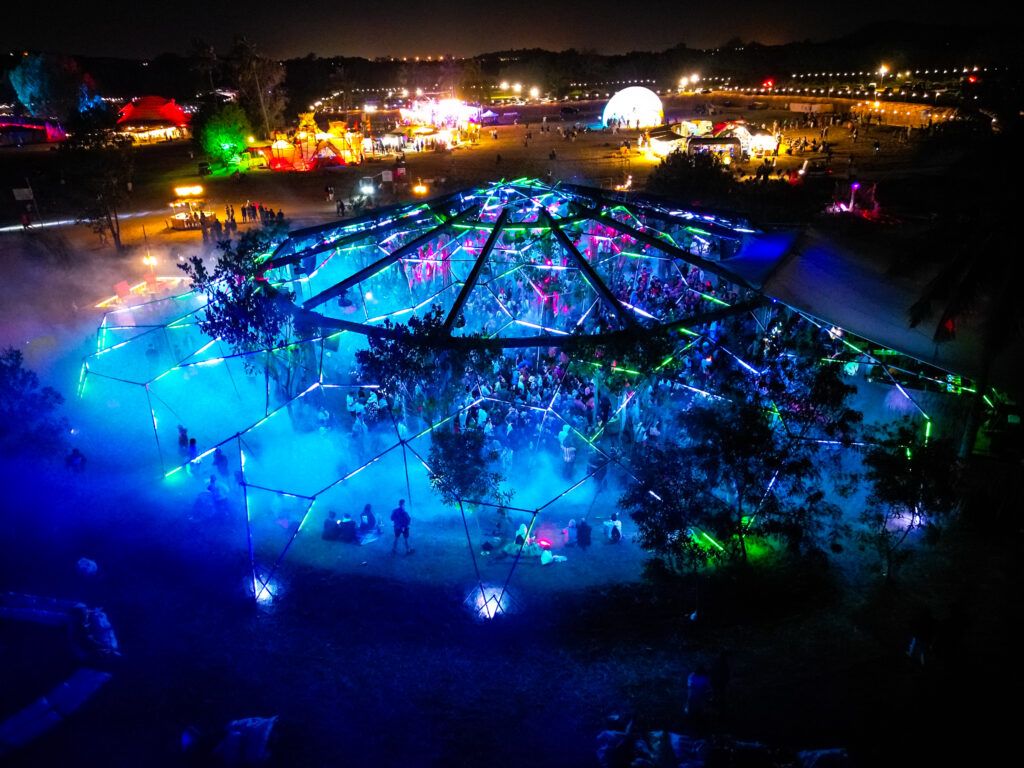The Immersive Audio Experience of Polygon Transports Audiences Inside the Music The Immersive Audio Experience of Polygon Transports Audiences Inside the Music...
For over four decades, L-Acoustics has been striving to connect humans through the best shared sound experiences. And its partnership with immersive audio experience creator Polygon does just that.
Founded in 2017 by Archie Keswick, Nico Elliott, and Adam Nicholas, Polygon is a collective of tech geeks, music lovers, and boundary-pushers who create unique music experiences through cutting-edge immersive sound, lighting, and other multisensory technologies. For their upcoming Polygon Live LDN show, they’ll feature an eclectic range of established and emerging artists, including Arooj Aftab, Cosmo Sheldrake, Gold Panda, Halina Rice, Jon Hopkins, Kaitlyn Aurelia Smith, Kiasmos, Max Cooper, Nitin Sawhney, Photay, Tinariwen, Weval, Yīn Yīn, and others performing in a 360-degree sound system within a hemispherical dome stage. The stage is rigged with an impressive 12.1.4 system, featuring 12 L-Acoustics line array speakers surrounding the audience, a festival-grade sub-wall delivering powerful bass, and four overhead arrays projecting crystal-clear sound from above.
This system boasts five times the number of speakers typically used in a professional sound system for a stage of this size. Additionally, the structure features a vast lattice of lighting that enhances the space, enveloping the audience in a cocoon of spatialized sound and synchronized lighting. The audience is fully engrossed in this spectacle, delivering a truly immersive experience.
The Catalyst that Sparked an Enduring, Fruitful Partnership
What led to the creation of Polygon? Co-founder Adam Nicholas reveals that it was born from a genuine passion for audio and music. Leveraging a connection with L-Acoustics, one of Polygon’s founders introduced the partners to L-ISA sound technology, which became Polygon’s defining focus point and feature. “Before L-ISA, we didn’t have this concept of wrapping audiences in sound and being inside the music,” says Nicholas.
He emphasizes that Polygon’s mission is to deliver the gold standard of sound. L-Acoustics has been their partner in various aspects, including creative collaboration, artist discovery, R&D, and the sound technology they use. Nicholas notes that Polygon leans into their partnership with L-Acoustics to help answer all the difficult questions, such as how many line array speakers to use, how wide apart they can be, and how to scale their events.
The partnership established in 2018 has been fruitful and enlightening for L-Acoustics as well. David Dohrmann, Global Director of Application Vertical at L-Acoustics, says that, based on highly successful deployments, including Wonderfruit music festival in Thailand, where Polygon has a stage every year, L-Acoustics has invited the Polygon technology team to collaborate with L-ISA experts.
These field tests recently led to the development of the “multi-dome” stage concept, which Polygon will deploy at the Bonnaroo Music and Arts Festival in Tennessee this year. This concept achieves sonic integrity, immersion, and scale while maintaining reasonable production budgets. It also provides valuable insights into designing ideal geometries and dimensions for spatialized audience areas. And of course, in addition to the knowledge gained, there’s a lot of pride in being associated with such an impressive artistic endeavor that’s swiftly increasing in popularity.
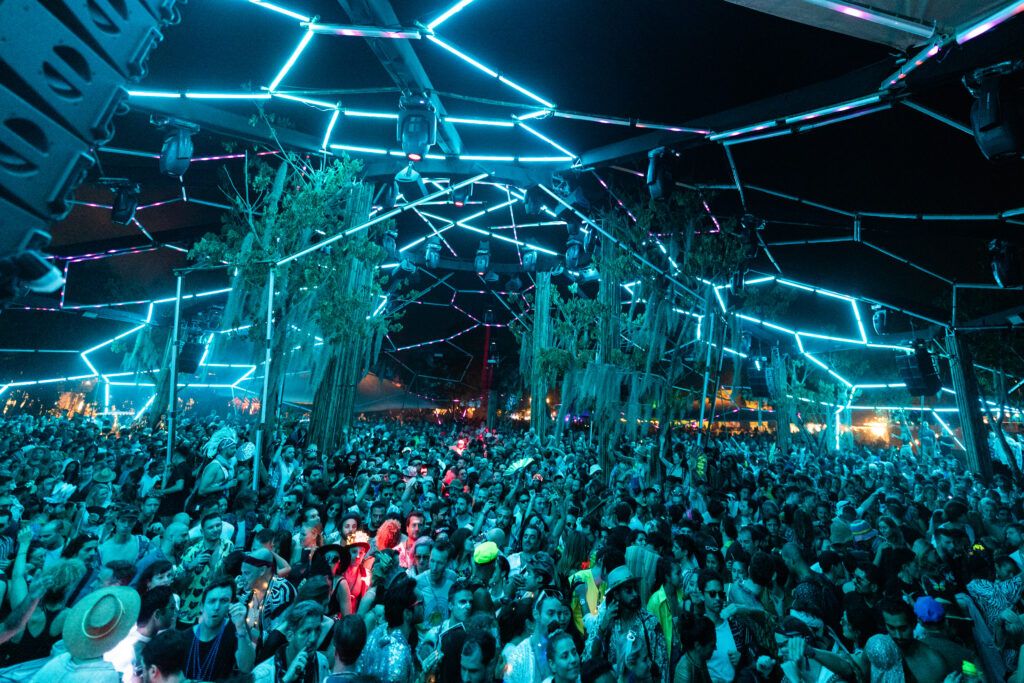
A Unique Immersive Audio Experience Has Unique Challenges
While the concept of an immersive audio experience is gaining traction, Nicholas acknowledges its unique challenges. The construction of their platforms and other logistical aspects requires meticulous attention. Does the chosen structure design and loudspeaker placement align with Polygon’s values? Will it enhance the artists’ performance? Will it be conducive to pristine live sound? And most importantly, will it pull the audience more deeply into the music as intended?
Furthermore, an immersive audio experience that spans over hours necessitates a diverse range of sounds. The creators of Polygon are acutely aware of the risk of overloading their audience with repetitive sounds, which could lead to desensitization. Their primary objective is to ensure that attendees truly experience the live sound and music, so a variety of sounds and stimulation that foster emotional engagement is crucial. Additionally, planning a marathon sound experience requires careful consideration of the audience’s physical well-being over an extended period. Ultimately, highly enjoyable user journeys are paramount in determining the success of their events.
Nicholas believes another challenge is the notion of getting back to nature. “I think what people want is to slowly move back to something that sounds completely natural. To be in a room but hear the forest; natural sounds are what we’re trying to get back to. What L-ISA allows us to do is to get closer to reconstructing something natural.”
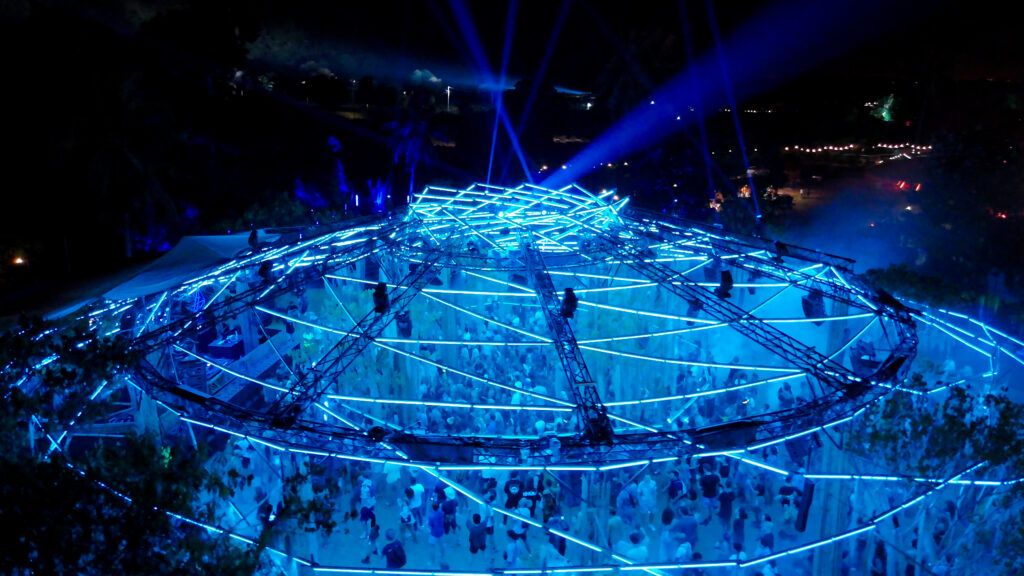
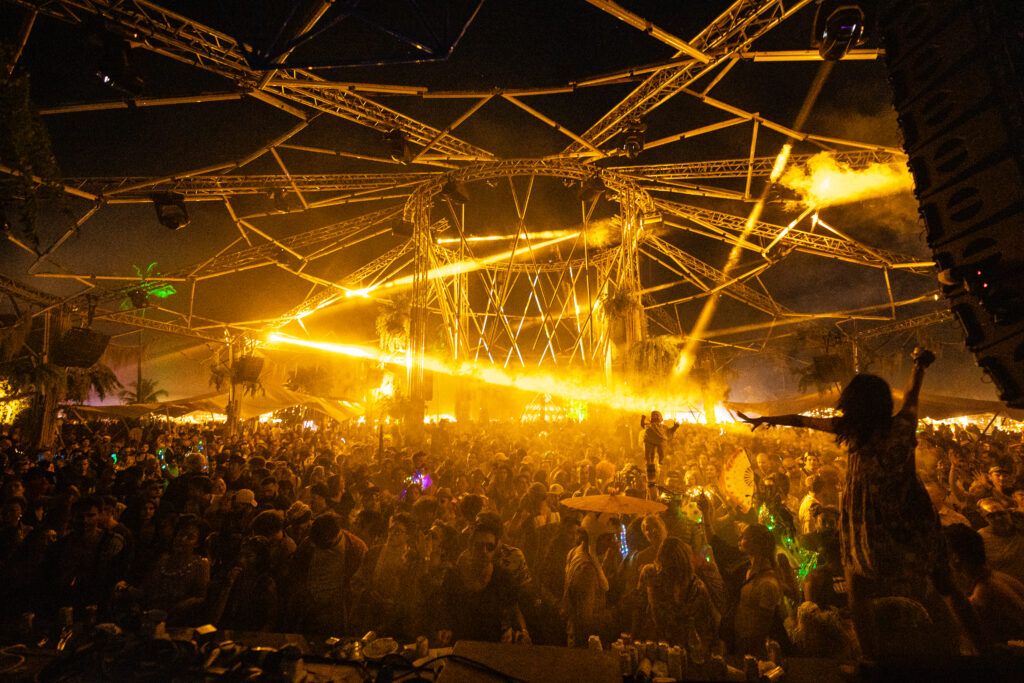
Where are Spatial Audio and Polygon Headed?
Nicholas believes that the future holds more Polygon Live events, such as a concert series or experiences where attendees can enjoy exceptional live sound performances from artists. Considering the widespread anticipation for their upcoming London event, Polygon Live LDN, Nicholas is confident the concept will gain popularity. “I think people will really get it and we’ll be seeing more Polygon events in new locations.”
Polygon will also be powering the Infinity Stage at Bonnaroo. This is not only the North American premiere of the Polygon’s immersive 360-degree live sound experience, but also the global launch of Polygon’s new stage design. For the first time, Polygon’s unique 360-degree spatial audio and synchronized lighting rig will run across three hemispherical domes.
“The question now is, how far can you push the concept of spatial audio? Push it to where we deliver the very best, but in a way that also makes good business sense. And Polygon has become the engine to bring music to life through spatial audio in the best possible way,” says Nicholas. “The stages, the different structures we build, and the technology we use are all designed to bring music into a live space in the most enjoyable way possible.” So, regarding the future, Nicholas says, “The goal is clear. It’s delivering the best possible 360-degree spatial audio experience time and time again, over the years ahead.”

